The Miniature Pinscher, often affectionately called the “Min Pin,” is a small yet spirited dog breed known for its boundless energy and confident demeanor. Despite their tiny size, Miniature Pinschers exhibit a larger-than-life personality and a distinctive appearance that sets them apart. In this comprehensive guide, we will explore the Miniature Pinscher’s history, physical characteristics, temperament, care requirements, and more to give you a thorough understanding of this lively breed.
History of the Miniature Pinscher
The Miniature Pinscher is a breed with a long history, hailing from Germany. Its origins date back to the 19th century, where it was developed as a smaller version of the German Pinscher. The breed was primarily used for hunting small game, such as rats and mice, due to its agility and tenacity.
Despite its small stature, the Miniature Pinscher shares many traits with its larger relatives, including a similar build and appearance. It is believed that the breed’s development involved crosses with the Dachshund and Italian Greyhound to refine its size and enhance its hunting abilities. The breed was officially recognized in the early 20th century and has since gained popularity for its distinctive look and energetic personality.
Physical Characteristics
Size and Weight
Miniature Pinschers are compact and muscular dogs. They stand between 10 to 12.5 inches tall at the shoulder and typically weigh between 8 to 12 pounds. Despite their small size, they possess a robust and sturdy build that reflects their energetic nature.
Coat and Color
The Miniature Pinscher’s coat is short, smooth, and shiny, lying close to the body. The breed’s coat comes in several colors, including:
- Black and Tan: A classic color combination with a black body and tan markings.
- Red: A solid reddish color.
- Chocolate and Tan: A chocolate brown body with tan markings.
- Blue and Tan: A bluish-gray body with tan markings.
The coat is relatively low-maintenance, requiring only occasional brushing to keep it in good condition.
Build and Structure
The Miniature Pinscher has a distinctive appearance with a sleek, athletic build. Its head is moderately wedge-shaped with a slightly rounded skull. The breed’s eyes are almond-shaped and expressive, contributing to its alert and curious expression. The tail is usually docked to about half its length, although some countries have banned tail docking, and natural tails are increasingly common. Their legs are straight and slender, providing a sturdy foundation for their agile movements.
Temperament and Personality
Energetic and Lively
Miniature Pinschers are known for their high energy and lively nature. They are constantly on the move, always eager to explore their surroundings and engage in play. This breed thrives in an environment that offers plenty of stimulation and activity. Regular exercise, such as daily walks and playtime, is essential for keeping them happy and healthy.
Confident and Independent
The Miniature Pinscher is a confident and independent dog. They have a strong-willed personality and are known for their assertive behavior. This confidence can sometimes come across as arrogance, but it is balanced by their affectionate and loyal nature. They are often described as being fearless, which can make them excellent watchdogs despite their small size.
Intelligent and Curious
Miniature Pinschers are intelligent dogs with a keen sense of curiosity. They are quick learners but can be somewhat stubborn. Training them requires patience and consistency, as they may have their own ideas about how things should be done. Positive reinforcement methods, such as treats and praise, work best with this breed.
Affectionate and Social
Despite their independent streak, Miniature Pinschers are affectionate and enjoy being part of family activities. They form strong bonds with their owners and are generally good with children. Early socialization is important to ensure they interact well with other animals and people. They are social dogs that thrive on attention and interaction from their family.
Exercise and Activity Needs
Daily Exercise
Miniature Pinschers are active dogs that require regular exercise to stay healthy and content. They enjoy activities that allow them to burn off their energy, such as running, playing fetch, and agility training. A minimum of 30 to 45 minutes of exercise per day is recommended to meet their physical and mental stimulation needs.
Play and Enrichment
In addition to physical exercise, Miniature Pinschers benefit from mental stimulation. Interactive toys, puzzle games, and training sessions can help keep their minds engaged. They are intelligent dogs that enjoy learning new tricks and solving problems, which can also help manage their energy levels.
Training and Socialization
Early Socialization
Early socialization is crucial for Miniature Pinschers. Exposing them to various environments, people, and other animals from a young age helps them develop into well-rounded adults. Positive experiences during the socialization period can prevent behavioral issues and promote confidence.
Consistent Training
Training a Miniature Pinscher requires consistency and patience. They respond well to positive reinforcement techniques, such as treats and praise. However, their independent nature can make training challenging, so it is important to remain persistent and firm. Avoid harsh training methods, as they can damage the bond between you and your dog.
Health and Care
Common Health Issues
Miniature Pinschers are generally healthy dogs, but they can be prone to certain health issues, including:
- Patellar Luxation: A condition where the kneecap dislocates, causing discomfort and lameness.
- Hypothyroidism: An underactive thyroid gland that can lead to weight gain and skin issues.
- Dental Problems: Small breeds are often susceptible to dental issues, so regular dental care is important.
Routine veterinary check-ups, a balanced diet, and regular exercise can help manage and prevent these health concerns.
Grooming
The grooming needs of Miniature Pinschers are minimal. Their short coat requires only occasional brushing to remove loose hairs and maintain its shine. Regular nail trimming, ear cleaning, and dental care are also important to keep them healthy. Their low-maintenance coat makes them a good choice for those who prefer a breed with less grooming work.
Diet and Nutrition
A balanced diet is essential for maintaining the health of a Miniature Pinscher. High-quality dog food formulated for small breeds will provide the necessary nutrients. Monitor their weight closely, as small dogs can be prone to obesity. Consult with your veterinarian to determine the best diet plan for your dog’s specific needs.
Living Environment
Space Requirements
Miniature Pinschers are adaptable dogs that can thrive in both apartments and houses. They do not require a large living space but do need room to move and play. A secure yard or access to a dog park can provide additional opportunities for exercise and socialization.
Indoor vs. Outdoor Living
Miniature Pinschers should primarily live indoors. They are companion animals that enjoy being close to their family and participating in household activities. While they enjoy outdoor playtime, they should not be left outside unsupervised for extended periods, especially in extreme weather conditions.
Conclusion
The Miniature Pinscher is a vibrant and spirited breed with a unique combination of energy, intelligence, and affection. Their small size and lively personality make them an appealing choice for those seeking an active and engaging companion. By understanding their exercise needs, training requirements, and health considerations, you can ensure that your Miniature Pinscher thrives as a happy and well-adjusted member of your family.
If you’re considering adding a Miniature Pinscher to your home, be prepared for a lively and confident dog that will bring excitement and joy into your life. With the right care, training, and attention, a Miniature Pinscher can become a loyal and cherished companion that will enrich your days with its playful and loving nature.






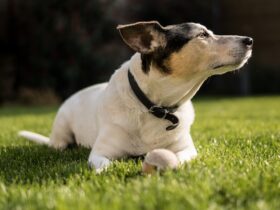
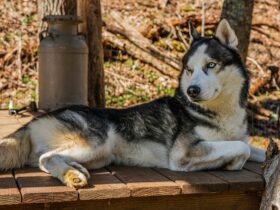
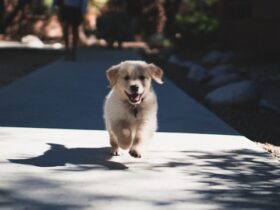
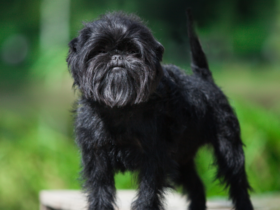
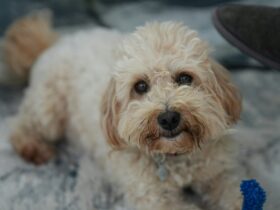
Leave a Reply